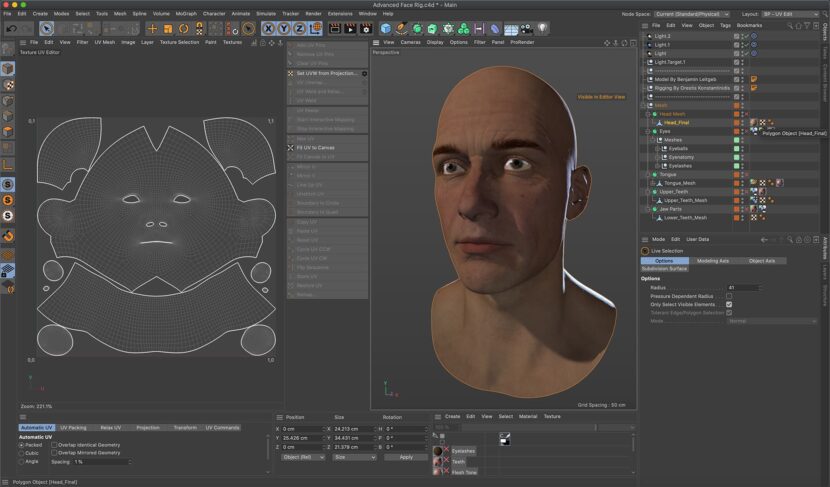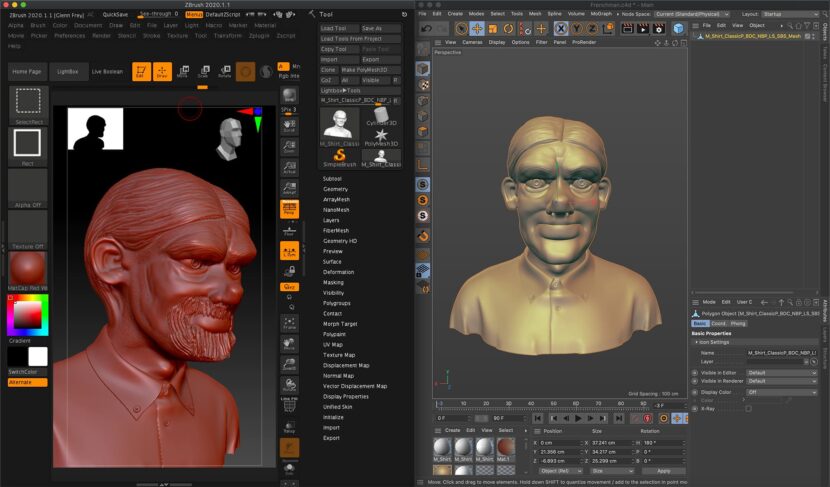On what would have been the first day of NAB 2020 in Las Vegas, Maxon has released an updated subscription-based version of their software, billed as Cinema 4D S22, with the “S” indicating a subscription-only release. S22 includes new features that are currently only available in this subscription-based product, though the features (and other improvements) will be rolled out to perpetual license customers in an upgrade later this year.
“Right now we’re going to start with a two major release a year cadence [for the subscription product] and then we’ll also have our bug fixes in between there as well,” CEO Dave McGavran said on the C4D Live online announcement. “Our engineers have always had things ready throughout the year, but they’re always backing up and testing them all at once at the end. And now our developers get to develop a feature to its completion, working with our meeting testers and our beta testers as well, and then releasing those to our customers when it’s ready.”
UV tools are much improved in the S22 release, with Maxon licensing the automated UV unwrapping tech from Quel Solaar’s Ministry of Flat, developed by Eskil Steenberg. The technology uses over 25 different algorithms to emulate the various techniques that an artist would use in order to unwrap a diverse set of 3D models.

The UV improvements also include improved selection tools, visualization tools, and new packing algorithms to optimize texture resolution. For instance, users can now see the UV seams in the 3D view during the unwrapping process as well as visualize the UV maps with the help of multi-color islands or a UV checkerboard.
There has also been a total rebuild of the Cinema 4D viewport core, with support for Apple’s Metal technology. “In some places you’ll see massive improvements,” says McGavran, with multi-instance performance significantly improved, for example. The re-write, like other areas of the core software that have been updated, will also allow for accelerated development of viewport improvements moving forward.
There have been pipeline improvements as well with built-in glTF export, a new GoZ bridge which allows interchange of models, UVs, and painted maps between Z-Brush and C4D. “You send a model to ZBrush, modify it and send it back with just one click,” says McGavran, “this new bridge supports millions of polygons and even imports, poly paint and poly groups.”

All of the modeling tools have been re-written onto the new kernel. There is improved performance, usability enhancements, and they are much better for preserving mesh attributes like UV and vertex maps.
Maxon is now offering their larger customers organizational licensing. This lets admins set up groups and users in order to more easily manage the assignment of licenses to artists.
In the C4D Live stream, McGavran did note that S22 should not break any plugins with the exception of those that rely on GL on the OSX platform (due to the fact that the viewport was re-written for Metal). Some “minor” changes are needed to those plugins he says the team at Maxon is actively working with developers to assist them with the changes.
Redshift development of 3.0 is going well with experimental builds available on the Redshift website (registration required) and a target release date later this summer. The OSX version with Metal support is now “feature complete” and now they are going through testing to improve performance. “It’s taken us a little bit longer than we wanted to,” says McGavran, “but we are definitely making great progress” on the Metal support. Within the next week, there will be a build including Optix 7 support which McGavran says brings with it a 20% performance improvement on Nvidia cards.
Full details about the release can be found on the Maxon website.
